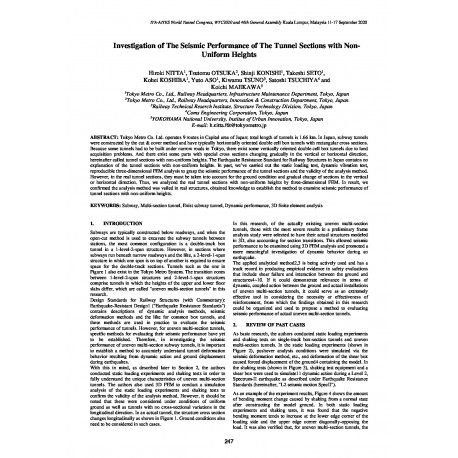Cart
0
0
No document
0,00 €
Total
Document successfully added to your shopping cart
Quantity
Total
There are 0 items in your cart.
There is 1 item in your cart.
Total documents
Total shipping
To be determined
Total
Search & filter
Search for a publication
Search & filter

Investigation of the Seismic Performance of the Tunnel Sections with Non-Uniform Heights
id83
T. Otsuka / K. Tsuno / S. Konishi / S. Tsuchiya / K. Maekawa / T. Seto / H. Nitta / K. Koshiba / Y. Aso
Tokyo Metro Co. Ltd. operates 9 routes in Capital area of Japan; total length of tunnels is 1.66 km. In Japan, subway tunnels were constructed by the cut & cover method and have typically horizontally oriented double cell box tunnels with rectangular cross sections. Because some tunnels had to be built under narrow roads in Tokyo, there exist some vertically oriented double cell box tunnels due to land acquisition problems. And there exist some parts with special cross sections changing gradually in the vertical or horizontal direction, hereinafter called tunnel sections with non-uniform heights. The Earthquake Resistance Standard for Railway Structures in Japan contains no explanation of the tunnel sections with non-uniform heights. In past, we’ve carried out the static loading test, dynamic vibration test, reproducible three-dimensional FEM analysis to grasp the seismic performance of the tunnel sections and the validity of the analysis method. However, in the real tunnel sections, they must be taken into account for the ground condition and gradual change of sections in the vertical or horizontal direction. Thus, we analyzed the real tunnel sections with non-uniform heights by three-dimensional FEM. In result, we confirmed the analysis method was vailed in real structures, obtained knowledge to establish the method to examine seismic performance of tunnel sections with non-uniform heights.


